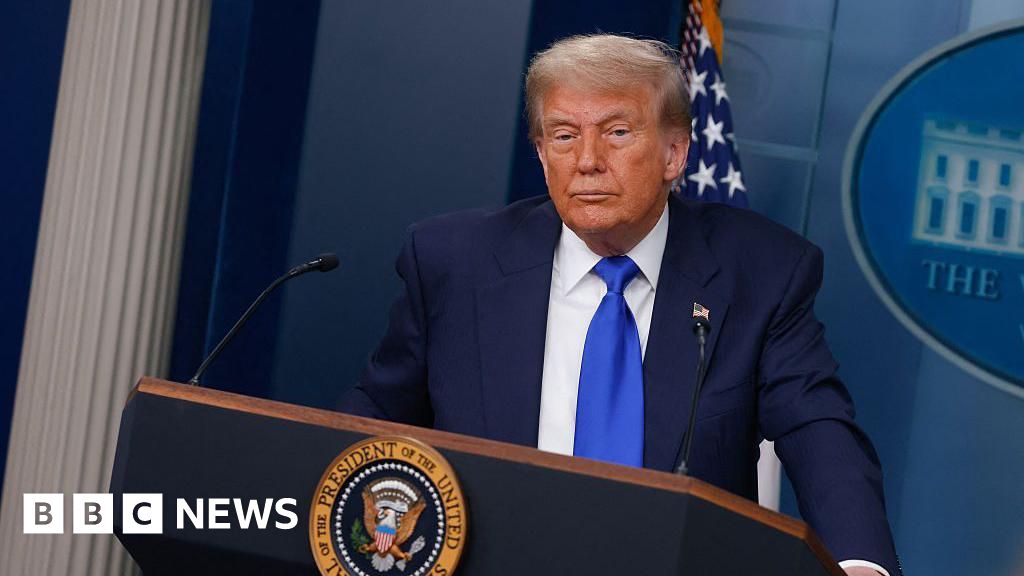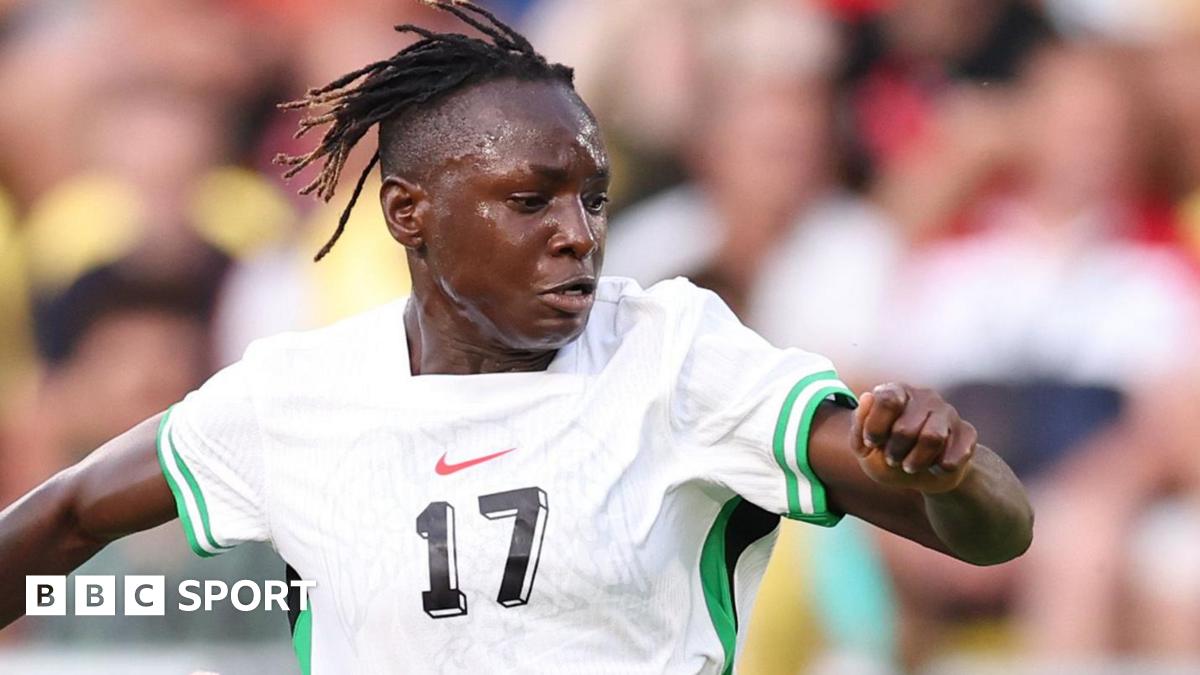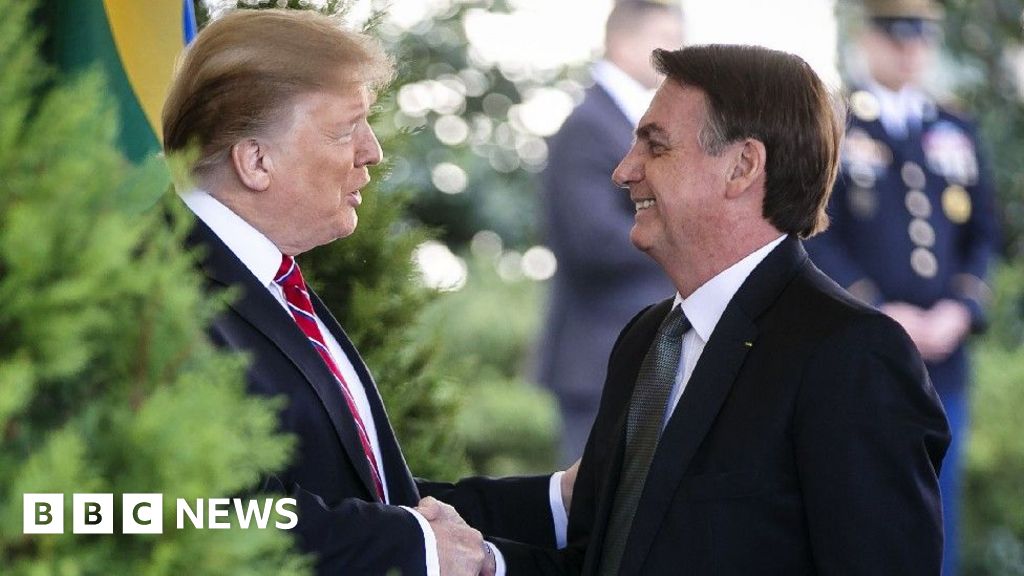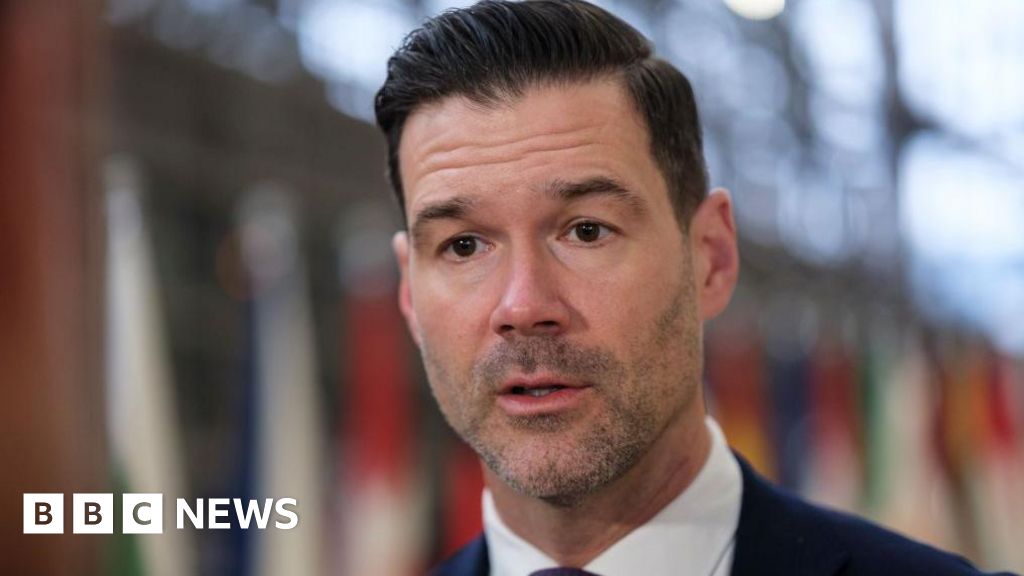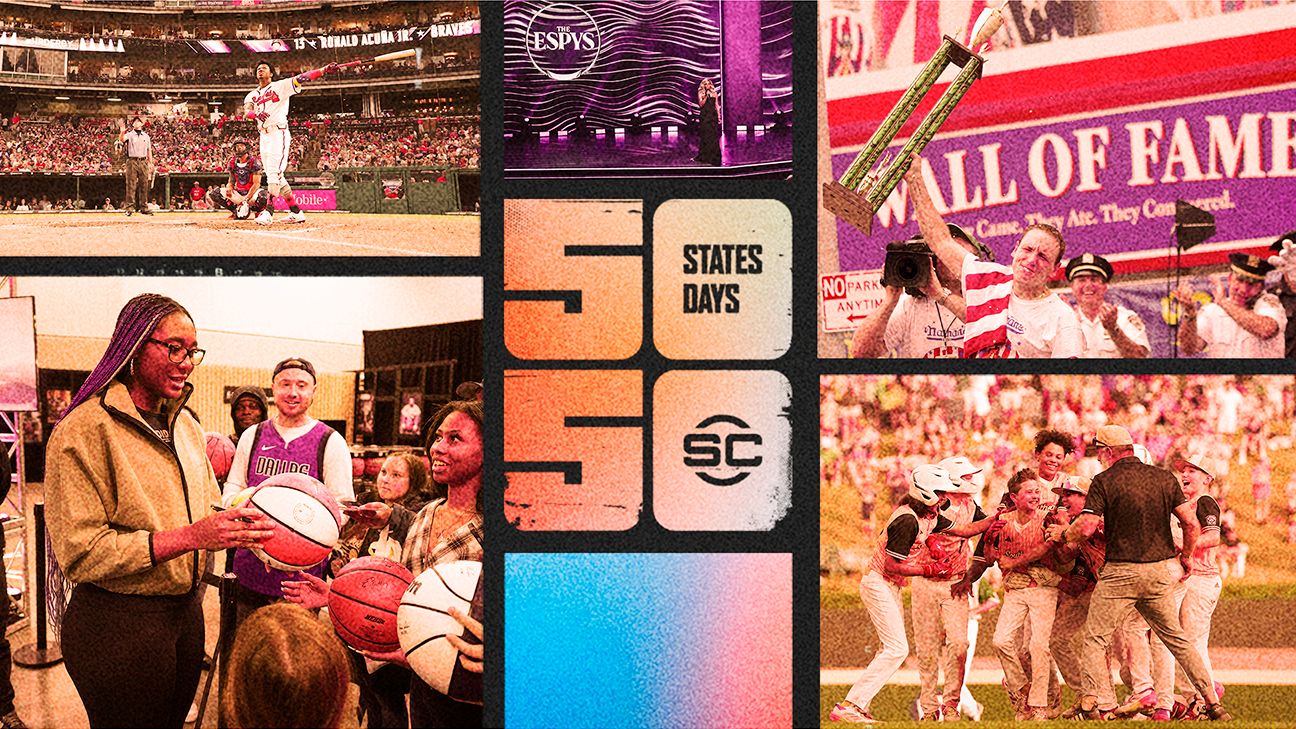It is impossible to ignore the parallels between expansion in the NWSL and MLS. The NWSL’s rising valuations, growing demand and increased emphasis on building new facilities look like the MLS playbook on repeat.
NWSL commissioner Jessica Berman, however, has recently focused on another league as her comparative benchmark: the NFL.
Berman has said multiple times in various settings that she believes the NWSL, which will expand to 16 teams next year, can support 30 to 32 franchises like the NFL. The comparison has raised a few eyebrows and several basic questions: Is the idea genuine, or a moonshot meant to generate buzz? What would a 32-team NWSL even look like? And is bigger actually better?
ESPN spoke with over half a dozen club owners and executives, as well as executives in the branding and sports banking world, to understand how the league’s future growth might develop. Most of them asked to be granted anonymity to speak more freely.
Investor demand driving endless NWSL expansion
One thing is obvious: There is a significant demand to invest in the NWSL, and women’s sports at large.
“The interest in the NWSL is tangible and you can see it,” Sean Clemens, managing director of sports investment bank Park Lane — which has worked on deals and valuations across major sports — told ESPN.
“We certainly see it only continuing. We take a lot of calls from interested investors that are trying to find ways to get involved in NWSL. The story is resonating with investors, and we really don’t see that changing anytime soon.”
The NWSL’s task is to convert that demand into growth. Multiple NWSL board members told ESPN that they can see the league doubling in size eventually, but that Berman’s benchmark is a long way off — long enough that they wouldn’t even hazard a guess on a timeline.
For all the times that Berman has mentioned the idea, she has never said how long it could take. A 30- or 32-team league right now seems ludicrous, but it sounds more achievable as a goal that is decades in the distance.
Another NWSL board member said they see a pathway to 20 teams through more rounds of expansion. After that, they said, it is difficult to see the league getting bigger — but they conceded that “the economics keep pushing you forward,” as was the case for MLS, which took 16 years to double in size from 15 teams to 30 this season. (The NWSL has already doubled in size since launching in 2013 with eight teams.)
“Our board believes that we can be the size of the NFL, there is nothing that stands in the way of us doing that, other than having access to top talent,” Berman said on stage at a U.S. Soccer event in Los Angeles in April. “There’s certainly not a problem with the supply, given the size of our country and the level of talent that exists, we just need to figure out how to develop them strategically and intentionally.”
Those views are not unanimous, however. One team owner told ESPN that the 32-team idea publicly specified by Berman is “very much her vision,” and that the board has not discussed a specific number of teams as a target. The same person conceded, however, that there is a strong overall desire among the board to keep expanding.
Others interviewed by ESPN drew a harder line in the sand against the idea of further expansion. One source called it a “crazy” idea to expand so much, while another said it would be “dangerous” for the product. Each referenced the need to improve talent development — not just players, but staff, too.

1:27
What will Alex Morgan’s investment bring to San Diego Wave?
Jeff Kassouf and Ali Krieger talk about the impact ex-USWNT star Alex Morgan will have at NWSL side San Diego Wave after becoming the newest minority investor at the club.
Still, even the dissenting crowd recognizes the demand and concedes the economics of expansion. The two most recent rounds of NWSL expansion were semi-public bidding processes that drove up the cost to a $110 million fee for Denver, which will begin play next year. Dozens of serious groups, including several well-qualified finalists in Cincinnati and Cleveland, were left on the sidelines during bidding processes that took place in 2022 and 2024.
One source with knowledge of expansion discussions told ESPN that the next additions to the league could happen more privately through direct conversations. The NWSL’s recent bidding processes left both the league and prospective groups with an understanding of what to expect from each other, meaning they don’t need to start from the beginning again.
There are also markets that rank high on the NWSL’s priority list, cities that several board members view as a matter of “when” not “if” they will join the league. Berman has publicly stated the key criteria that everyone has echoed privately: investment groups need the combination of the right market, ownership backing and facilities plans. None of those criteria will soon change; the only thing that will fluctuate is the cost of entry.
The economics of NWSL expansion
Why keep expanding? Like most things, money is a big part of the answer.
Denver’s $110 million expansion fee is over twice as much as Boston Legacy FC paid ($53 million) to join the NWSL. Both teams will begin playing next year, but Boston was awarded the franchise two years earlier, in 2023. Five years ago, ownership groups were paying around $2 million to join the NWSL. The asking price is only going to keep going up.
This is where the NWSL’s parallels with MLS continue. MLS expansion fees ballooned from the mid-eight figures just over a decade ago to $500 million for San Diego FC, which began playing this year. One NWSL owner said they firmly believe the NWSL will reach that $500 million expansion fee benchmark in the future as well.
The reality for the NWSL is that it is still a league that loses money, a point made by multiple sources while reporting this story. Expansion fees in any league help current owners offset operating costs and avoid making cash calls to other investors. Those hundreds of millions of dollars are recycled back into the league office and pay off debt.
Almost everyone inside the NWSL who was interviewed for this story spoke about the importance of the next media rights deal and how it is intertwined with expansion. The NWSL’s current media rights deals with ESPN, Amazon, CBS and Scripps Sports bring in $60 million annually combined. Those contracts all conclude at the end of 2027. The NWSL is also shopping its unsold games (which currently air on the league’s in-house platform) to create more revenue.

1:26
Why NWSL owner Michele Kang likes promotion/relegation
Michele Kang tells Jeff Kassouf why she’s a fan of promotion and relegation and that she thinks it’s “exciting.”
Team owners and executives are determined to achieve greater scale for sponsors, and that means they need more visibility on TV and wider reach in more markets across the United States — a.k.a., they need to expand.
Geographically, the NWSL finally addressed a major hole by adding three teams in California (Angel City FC and San Diego Wave in 2022, Bay FC in 2024) over the past four seasons, but there are still swaths of the country without a team in the league, including in the Southeast and in several big cities between the coasts.
Counting the additions of Boston and Denver, the NWSL is in seven of the top 10 media markets,but only 10 of the top 20, per Nielsen rankings. Some of the NWSL’s glaring market absences are Dallas-Fort Worth (No. 4), Atlanta (No. 7) and Miami (No. 18). Atlanta has been in and out of NWSL discussions for nearly a decade. A group in Tampa (the 11th biggest media market) was a finalist in the 2023 expansion process.
But growth is about more than increasing scale of teams and media rights partners. Both a sports banking investor and a global branding expert who has worked with some of the top soccer clubs in the world told ESPN that the NWSL needs a multi-faceted approach to scaling up.
What happens if the NWSL falls short of its lofty goal for media rights valuations in upcoming negotiations? And what good are more games on TV without regular content surrounding them to feed fandom?
The NFL dominates the content cycle every day of the year by making news and storylines. The NWSL, by comparison, falls short in this respect, often disappearing from news cycles in the offseason. Berman & Co. have openly discussed the need for better storytelling around the league, a process that has only recently begun in earnest.
Is expansion always a good thing?
NWSL expansion makes financial sense for the league, and it helps address the historical shortage of professional opportunities for women’s soccer players where two previous U.S. leagues have failed. The NWSL’s growth to 16 teams next year will bring it to around 400 rostered players.
Every major American men’s league has at least 30 teams, and they all utilize conferences and divisions to create rivalries and mitigate travel. The NWSL currently uses a balanced schedule with a single table, a global standard that will become increasingly hard to maintain as the league grows.
The NWSL has also previously compared itself to the global market and other top women’s leagues like England’s Women’s Super League, which just voted to expand from 12 to 14 teams. Thirty-team leagues in a single division are unheard of globally.
Several NWSL general managers expressed concerns about the quality of the league’s player pool if expansion continues, with only one out of 14 saying they think 30 teams is a good idea.
The NWSL appears to be mindful of those concerns about compromising the product, and a second division could launch as early as next year for franchises to field reserve teams. Several executives with NWSL connections are also on a recently formed committee tasked with overhauling college soccer. Each solution could allow for more professional development of young players.
“Our strategy is really clear,” Berman told ESPN recently about the league’s area of focus. “We know that we want to transcend cultural relevance from a business perspective. We want to ensure that people know of the NWSL and want to watch our games and want to attend our games and know the stories of our players.
“On the sporting side, we need to make sure that we have the best product, best players in the world, and that we’re developing systems and practices to cultivate the path to pro so that we can continue to scale and grow from an expansion perspective in order for us to capitalize on the incredible demand that exists across the country from an expansion perspective and to be a 30-team league, we have to make sure that we have the ability to source talent domestically and proactively develop that talent.”
The NWSL’s prospective second division league could also feature non-NWSL members — which is an expansion strategy, too. One team owner noted that the second division could be seen as a testing ground for NWSL expansion markets. Successful USL markets, for example, have made the move to MLS in the past.
Outside factors will also influence the future of NWSL expansion. The USL Super League just completed its first season as a sanctioned first-division league and while it lacks the star power and visibility of the NWSL that appeals to many investors, the entry costs are a fraction of those in the NWSL. There is an overlap in markets — some direct, like Washington, D.C., teams in each league playing in the same stadium, and some indirect. Tampa Bay Sun FC, playing in a market the NWSL recently looked at in depth, just won the inaugural USL Super League title.
The WNBA is also expanding, and some investors might chase teams in that league as their entry point into the women’s sports boom. The same sports branding expert speaking with ESPN said that the WNBA has a stronger league brand than the NWSL.
Internally, the NWSL still has several clubs underperforming as businesses. Berman has previously shut down the idea that the NWSL would relocate a struggling franchise, but one league source said they feel there is anecdotally less resistance to the idea than there has been in the past.
It is possible that an investment group interested in entering the NWSL will view the acquisition of an existing team as a better investment than starting from scratch, although those opinions vary by investor and team. What is clear is that investors are still hungry to get into women’s sports and the NWSL specifically even as valuations rise to $250 million, nearly a hundred times more than some team valuations just five years ago.
Berman believes the NWSL can support 30 teams and that there are enough players to fill those rosters. Will the appetite among investors to join the NWSL remain even as prices continue to rise?
As one sports banking executive put it, market valuation is like a work of art: A team is worth whatever someone is willing to pay for it. Right now and for the foreseeable future, the NWSL appears to have a full gallery.
Source link


